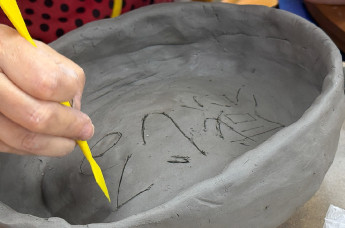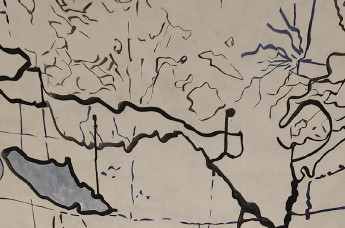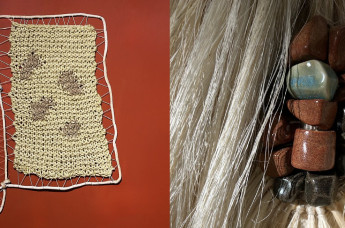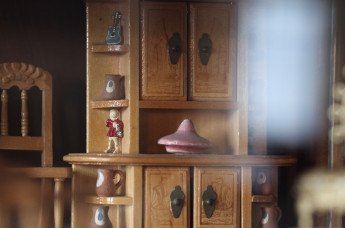Disturbing is a word that can be perfectly adjusted to the often monumental installations of Argentine artist Eduardo Basualdo (1977). There is something recurrent in his works, exhibited in consecration spaces all over the world: an idea of "passage" in the ritual sense, which leads from one state to another; a latent tension and an effective allusion to the surrounding architecture.
His work Madre del río (Mother of the river), an imposing production that forms part of the exhibition Immediately after and shortly before / 25 years Berlin-Buenos Aires, along with other Argentine and German artists, can be visited until October 27 at the MUNTREF Immigrants Hotel venue, as part of BIENALSUR 2019.
The public will find a thin but imposing black wall, seven meters wide by four meters high - a work produced especially for BIENALSUR 2019 - made entirely of black aluminum.

"I was interested in exhibiting the contradictory characteristics of this material: the lightness of its weight, the density of its presence, the permeability to light and its opacity," explains artist Eduardo Basualdo to BIENALSUR.
The installation occupies one of the rooms of the old building located next to the port, very close to the windows through which daylight enters, pointing directly at the work, the same windows from where you can observe the reflection of the sun's rays on the waters of the Rio de la Plata a few meters away.
In the first edition of the biennial, in 2017, Basualdo presented in the city of Rosario "Nosotros" (“Us”), an installation in the public space of two metallic grilles of 6 meters by 4, with the word "Us" inscribed between its bars. The two leaves are crossed in such a way that they support each other so as not to fall. In addition, the space between the bars is sufficient for the spectators to pass through them. During the second edition of BIENALSUR, the work was replaced in Independencia Park, in Rosario.
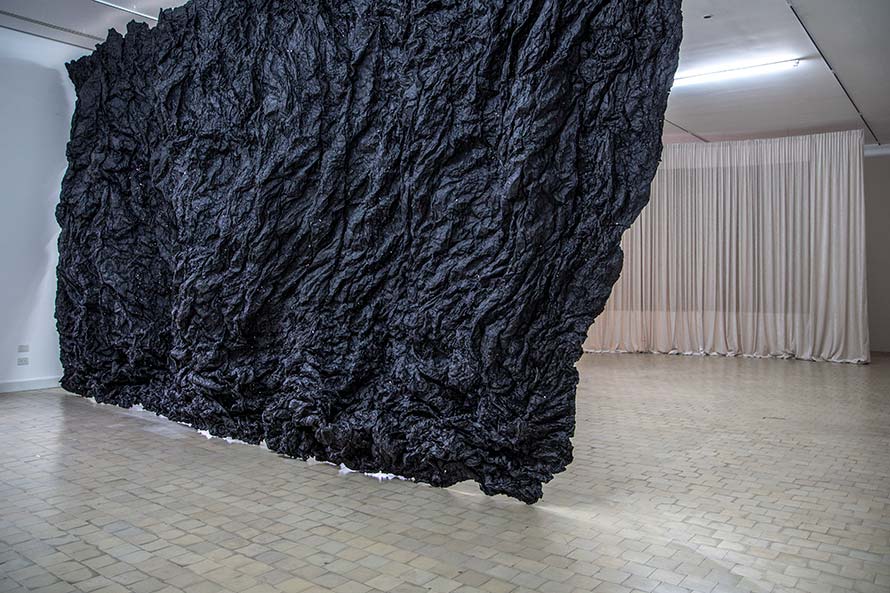
Some will remember his installation "Freelancer", exhibited in arteBA, a handmade helicopter of almost nine meters, with its blades rotating, contained within a structure of four walls, giving the idea of an unstable equilibrium about to break.
Another of his famous creations, "La cabeza de Goliat" (Goliath's Head), presented for the first time in 2014 at the Palais de Tokyo in Paris, is an enormous black volume that hangs from the ceiling and oscillates centimeters from the spectator's head, generating, once again, uncertainty or restlessness in the visitor.
The theatrical is present in many of his works, perhaps because of his training as a puppeteer at the San Martín Theatre, to which he added studies of fine arts.
How was the work Mother of the River born?
Eduardo Basualdo: This work was made especially for this exhibition. It is a work partly inspired by space, the Immigrants' Hotel and its nostalgic atmosphere, but also crossed by a moment of my much more elementary production, where the materials with which I work are presented without narration. I wanted to intervene in the space with this material, black aluminum, in a simple way. To exhibit its contradictory characteristics, the lightness of its weight, the density of its presence, the permeability to light and its opacity.

What implications does it have for you that the work is located next to the Rio de la Plata?
EB: Just as this work focused on working materials, I believe that my practice in general also began to wonder about the identity of this city. I like to think about how a given landscape conditions a population. One can weave innumerable hypotheses about the relationship between these waters and the practices of the inhabitants that surround them. In this case, the title of the work "Mother of the River" alludes to the muddy background that characterizes the course of this river.
Recurrently, in your works there is an allusion to uncertainty. Why?
EB: I think it's one of the ways to appeal to our fragility. And fragility, within a fictional space, is a very attractive state from which to think and feel.
How do you think your work dialogues with that of your colleagues in the show, Edith Dekyndt, Gabriela Golder and Marcel Odenbach?
EB: The works of my colleagues bring a very powerful context to my work. Although they limit their fictional potential, they underline in my work its most monumental and oppressive aspect. 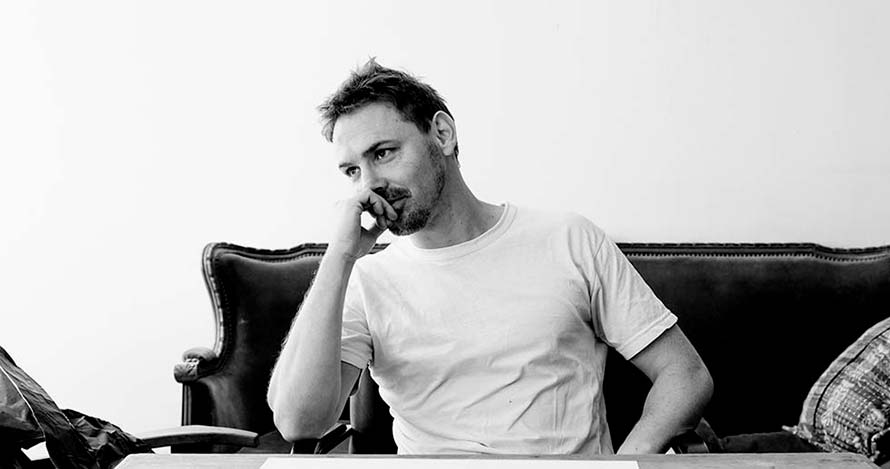
Curated by Heike van den Valentyn, the exhibition "Immediately after and shortly before" questions as a whole the relationship between subjective and collective experience on both sides of the Atlantic, and the way in which they are transmitted.
The exhibition is supported by the Chancellery of the Senate of Berlin, the Embassy of the Federal Republic of Germany Buenos Aires, the Goethe-Institut Buenos Aires and the Ministry of Culture of the City of Buenos Aires.

